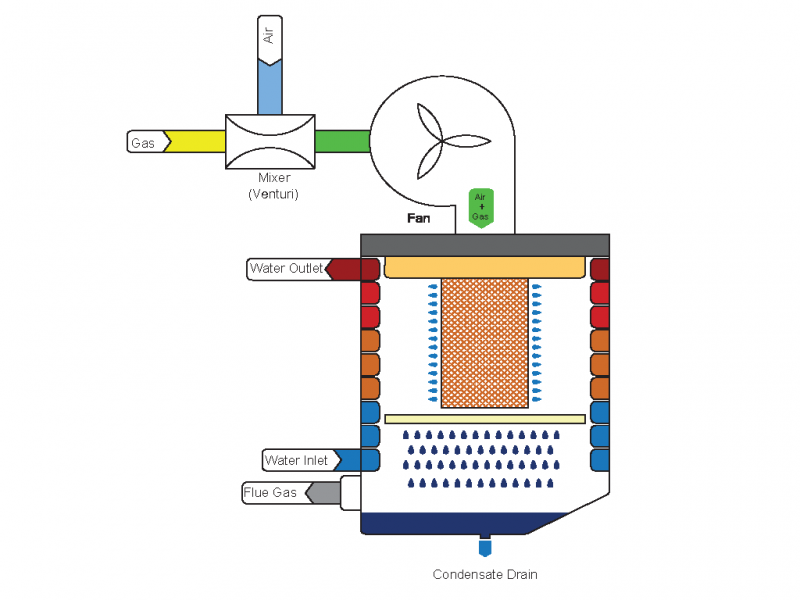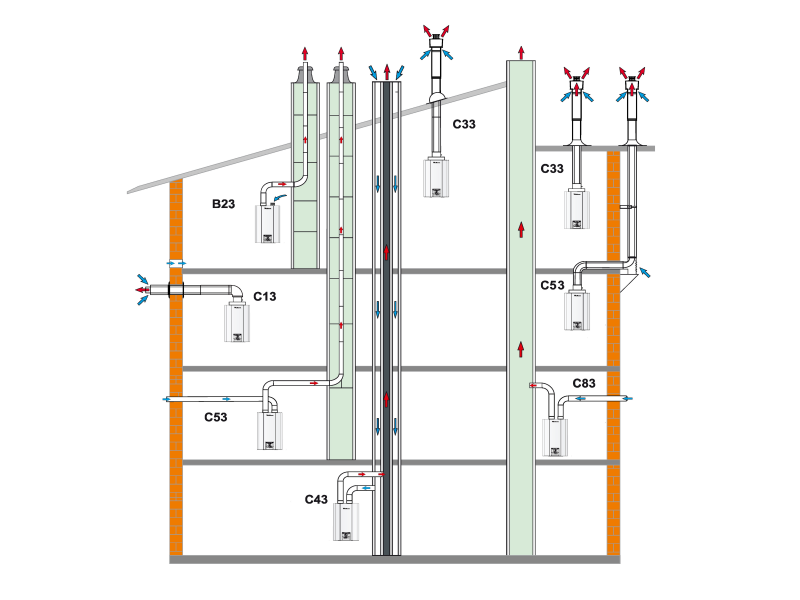Condensation technology is an effective method in converting of natural
gas to useful energy by combustion. The latent heat of water vapor in flue gas
is incorporated to the system and the thermal efficiency is increased by the
use of this latent energy. The condensing boilers discharges flue gas at low
temperatures while operating.

Synchronized operation of more than one condensing boiler in central heating systems is called CASCADE system. In cascade systems, the boiler that manages the system is called MASTER, and the boilers working in connection with it are called SLAVE. The master boiler operates all boilers in the system according to the principle of equal aging and ensures that the service life of all boilers is extended. The biggest advantages of the cascade system compared to conventional systems are:
According to the mounting types;
According to the exchanger types;
Before the commisioning; central heating system/installation
water circuit should be cleaned with recommended solutions (flushing process)
and after that it should be ensured that the central heating water is in suitable
condition. In boiler room conversion processes, the primary circuit (boiler
circuit) and secondary circuit (temperature zones) can be separated by using a
plate heat exchanger to prevent the boiler circuit from being affected by the
problems that may arise from the old installation.
15% more efficieny compared to conventional boilers
due to the heat recovery thanks to the condensation technology.
Less fuel consumption with efficient
combustion technology and low flue gas temperature.
Low electric energy consumption due to high
modulation ratio and efficient circulation pump.
Less pollutant emmissions due to the reduced
fuel consumption and efficient combustion.
For all the flue types BXY or CXY; “Y” denotes postion of the fan:
1 – No fan, natural convection; negative flue
stacks.
2 – Fan after the heat exchanger
3 – Fan before the burner
B23 = It is a chimney system, that takes the
combustion air from the environment where the boiler is located and discharges
the flue gas to the outside.
C13 = It is a chimney system, that takes the
combustion air from outside and discharges flue gas to the outside environment via
horizantal pipes.
C33 = It is a chimney system, that takes the
combustion air from outside and discharges flue gas to the outside environment via
vertical pipes
C43 = It is a chimney system, that takes the
combustion air from the outside and discharges the flue gas to the outside with
two separate pipes, which are connected to a main chimney.
C53 = It is a chimney system, that takes the
combustion air from the outside with a horizontal pipe and discharges the flue
gas to the outside with a vertical pipe.
C63 = It is a chimney system, that takes
combustion air from outside and discharges flue gas to the outside via vertical
pipes, and intended to be connected to separately certificated combustion air
and flue gas system.
C83 = It is a chimney system, that is
connected to the single or common duct system, which discarges flue gas via
natural convection, and takes combustion air from outside.

© Copyright 2020. All Rights Reserved. | Atılım Medya